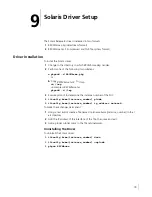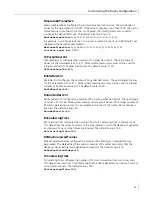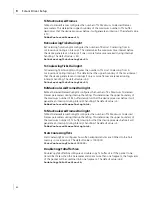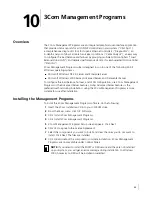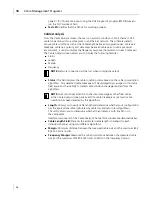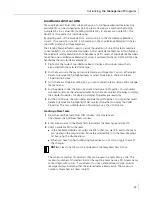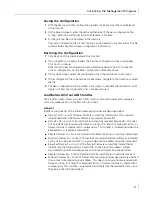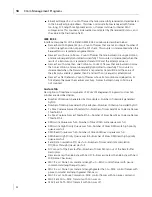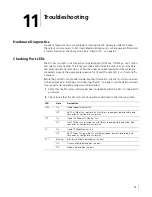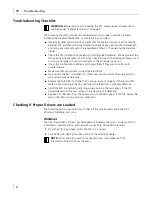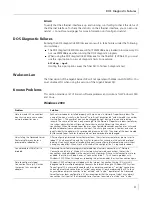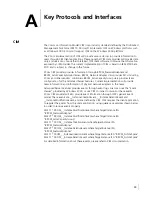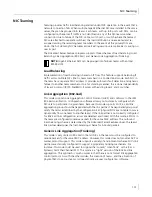
Initializing the Management Programs
91
Saving the Configuration
1
With the Team and VLAN configuration loaded, click
Save As
at the Load Balance/
Virtual Lan tab.
2
At the Save As screen, enter the path and filename of the new configuration file.
A “bcg” extension will be placed on the filename. Click
Save
.
3
A configuration file will be placed in the directory.
This new configuration file is a text file and can be viewed by any text editor. The file
contains both adapter and team configuration information.
Restoring the Configuration
1
Click
Restore
at the Load Balance/Virtual Lan tab.
2
If a configuration is already loaded, the Restore Configuration screen will appear.
Click
Yes
to continue.
Note that all current configuration data currently loaded will be lost. To save the
current configuration, do the Save Configuration procedure above.
3
At the Open screen, select the configuration file to be restored and click
Open
.
4
If the configuration file to be restored is elsewhere, navigate to that location to select
the file.
5
The new configuration will be loaded. Click
Apply
to complete the restoration. Until
Apply
is clicked, the configuration has not been restored.
Load Balance/Virtual LAN Statistics
The Statistics screen allows you view traffic statistics. Statistical values and coverage is
more comprehensive for some NICs than for others.
General
Interface components of the Statistics/General window are described below:
■
Frames Tx OK—Count of frames that are successfully transmitted. This counter is
incremented when the TransmitStatus is reported as transmitOK.
■
Frame Rx OK—Count of frames that are successfully received (receiveOK). This does
not include frames received with frame-too-long, FCS, length or alignment errors, or
frames lost due to internal MAC sublayer error. This counter is incremented when the
ReceiveStatus is reported as receiveOK.
■
Directed Frames Tx—Count of directed data frames that are successfully transmitted.
■
Multicast Frames Tx—Count of frames that are successfully transmitted, as indicated
by the status value transmitOK, to a group destination address other than broadcast.
■
Broadcast Frames Tx—Count of the frames that were successfully transmitted as
indicated by the TransmitStatus transmitOK, to the broadcast address. Frames
transmitted to multicast addresses are not broadcast frames and are excluded.
■
Directed Frames Rx—Count of directed data frames that are successfully received.
■
Multicast Frames Rx—Count of frames that are successfully received and are directed
to an active nonbroadcast group address. This does not include frames received with
frame-too-long, FCS, length or alignment errors, or frames lost due to internal MAC
sublayer error. This counter is incremented as indicated by the receiveOK status, and
the value in the Destination field.



